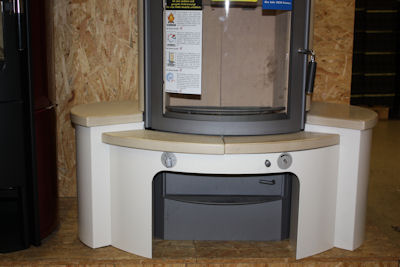Cost calculator fireplace stove & pellet stove comparison - Calculate Now
Planning a new wood heating system
 Sooner or later, every homeowner will find himself in the situation where he needs to renovate his wood heating system. In view of the rising prices for oil or gas, one should not only think about a renovation at this point, but rather about a new installation of a heating system that makes use of the alternative heating methods as in the case of a wood heating system or a pellet heating system.
Sooner or later, every homeowner will find himself in the situation where he needs to renovate his wood heating system. In view of the rising prices for oil or gas, one should not only think about a renovation at this point, but rather about a new installation of a heating system that makes use of the alternative heating methods as in the case of a wood heating system or a pellet heating system.
Save heating costs alternatively
Saving heating costs is a topic of interest to many people today, as the price of energy such as oil and gas continues to rise. One of the many ways to save energy is to use alternative heating methods, such as a fireplace or pellet heating.
 Furthermore, lowering the room temperature by just one degree Celsius is also very effective, as this can save around six percent of energy costs. Proper ventilation also makes an effective contribution to saving energy, because anyone who opens all windows and doors wide two or three times a day while turning off the heating can save an incredible amount of heating energy.
Furthermore, lowering the room temperature by just one degree Celsius is also very effective, as this can save around six percent of energy costs. Proper ventilation also makes an effective contribution to saving energy, because anyone who opens all windows and doors wide two or three times a day while turning off the heating can save an incredible amount of heating energy.
Stoves & fireplaces
Tiled stoves and fireplaces are room stoves, i.e. they are operated directly in the room to be heated. They give off their heat to the air in the room.
 Modern tiled stoves or fireplaces can also be connected to the central heat circuit of the house. This solution is characterized by a particularly high efficiency and helps to relieve the central heating. A tiled stove or fireplace gives them in the wake of rising energy prices, a piece of independence from oil or gas.
Modern tiled stoves or fireplaces can also be connected to the central heat circuit of the house. This solution is characterized by a particularly high efficiency and helps to relieve the central heating. A tiled stove or fireplace gives them in the wake of rising energy prices, a piece of independence from oil or gas.
The stoves are built of firebrick and thus store heat for a very long time. In addition to the classic open fireplace, many manufacturers now offer closed systems. In this case, the combustion takes place behind a glass pane, which can also be opened if necessary.
More power through fireplace insert
Fireplace owners often have a fireplace insert to achieve a stronger heating performance. Fireplace inserts are usually nothing more than complete fireplaces, only they are not surrounded by a mantle coating or a facade. They are made of either cast iron or steel.
The stove inserts that are water-bearing, this means that the stove significantly reduces heating costs, by supporting the water heating. So to speak, these stoves are a supplementary heating that relieves the customer's wallet. The water tank filled with water is installed above the stove and is completely connected to the water heating system by a specialist, so that the customer can additionally heat the drinking water by burning the wood. So as soon as firing begins, the water in the tank is heated and is available to the homeowner as needed.
Also, the user of these stove inserts should pay attention to certain features before installation the stove must have a CE mark or be approved by the German Institute for Construction Technology. The CE marking is issued by a test of the TÜV and is then located on the nameplate of the stove. A test number is placed on the nameplate by the German Institute for Construction Technology through a detailed inspection of the safety of the stove insert. Fireplace inserts have a closed combustion chamber, this can often be seen through glazing on the stove, panoramic windows are also available for such stoves.

Topics: building, Living, Interior design, Heating, heating technology, Fuels, Homes, Heating Plant



